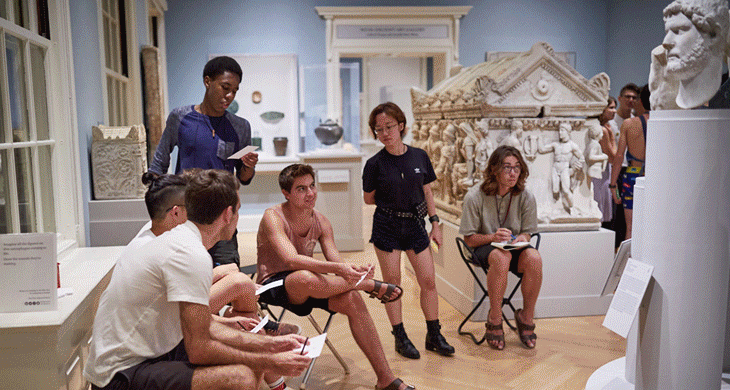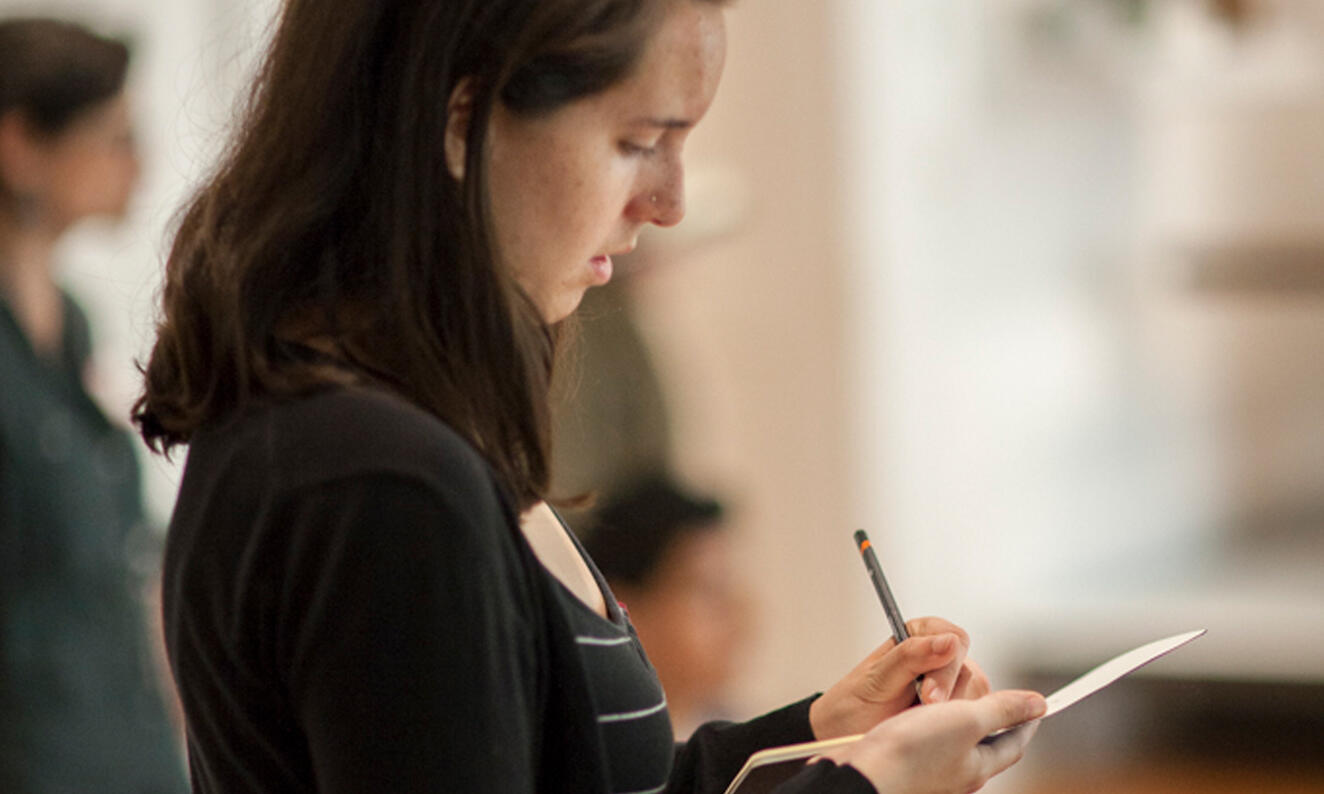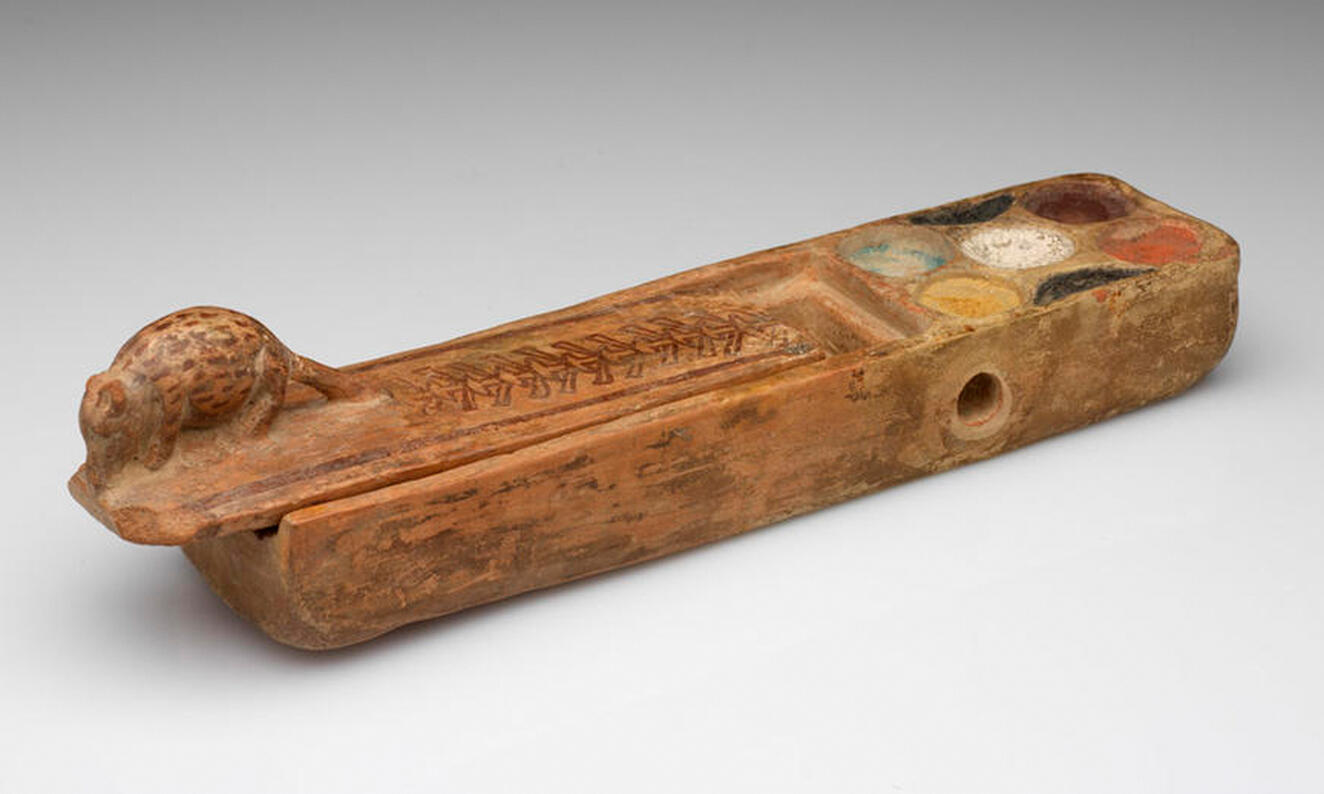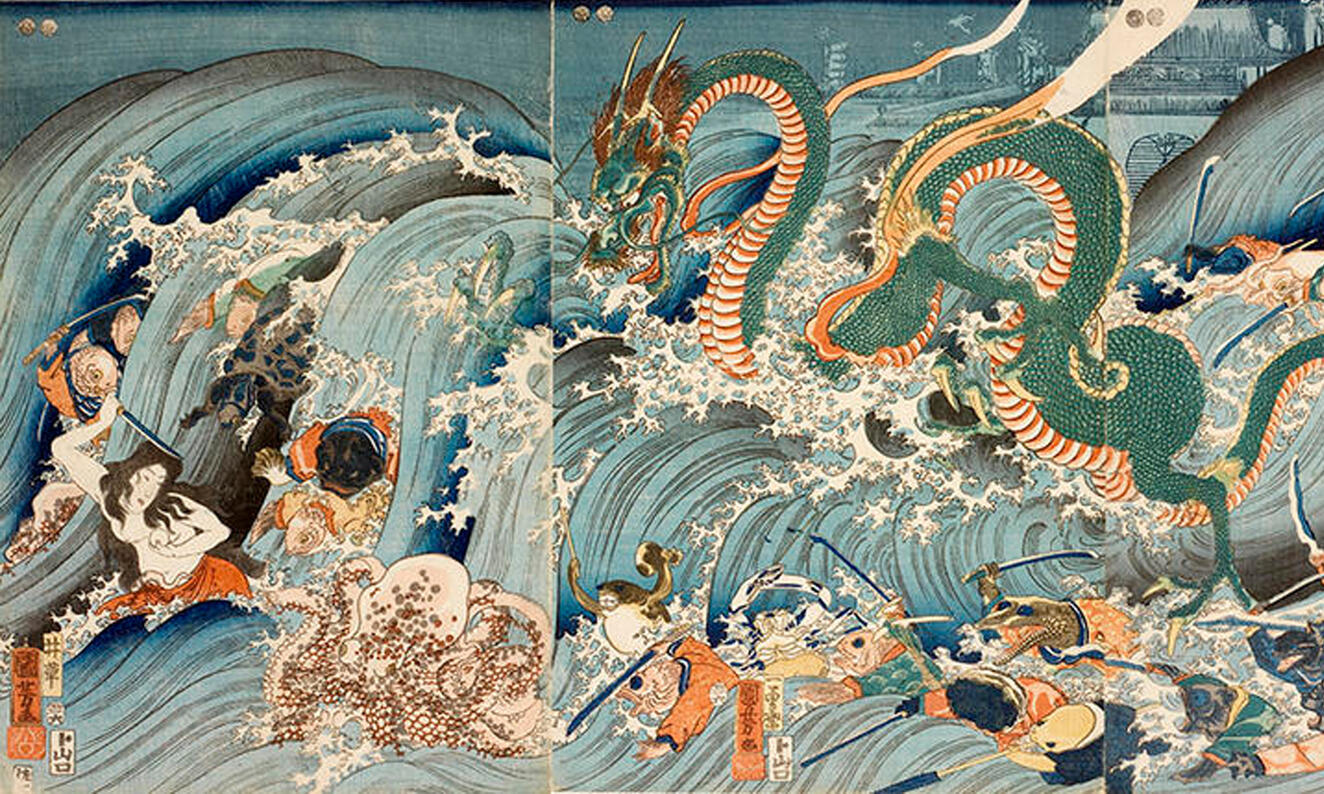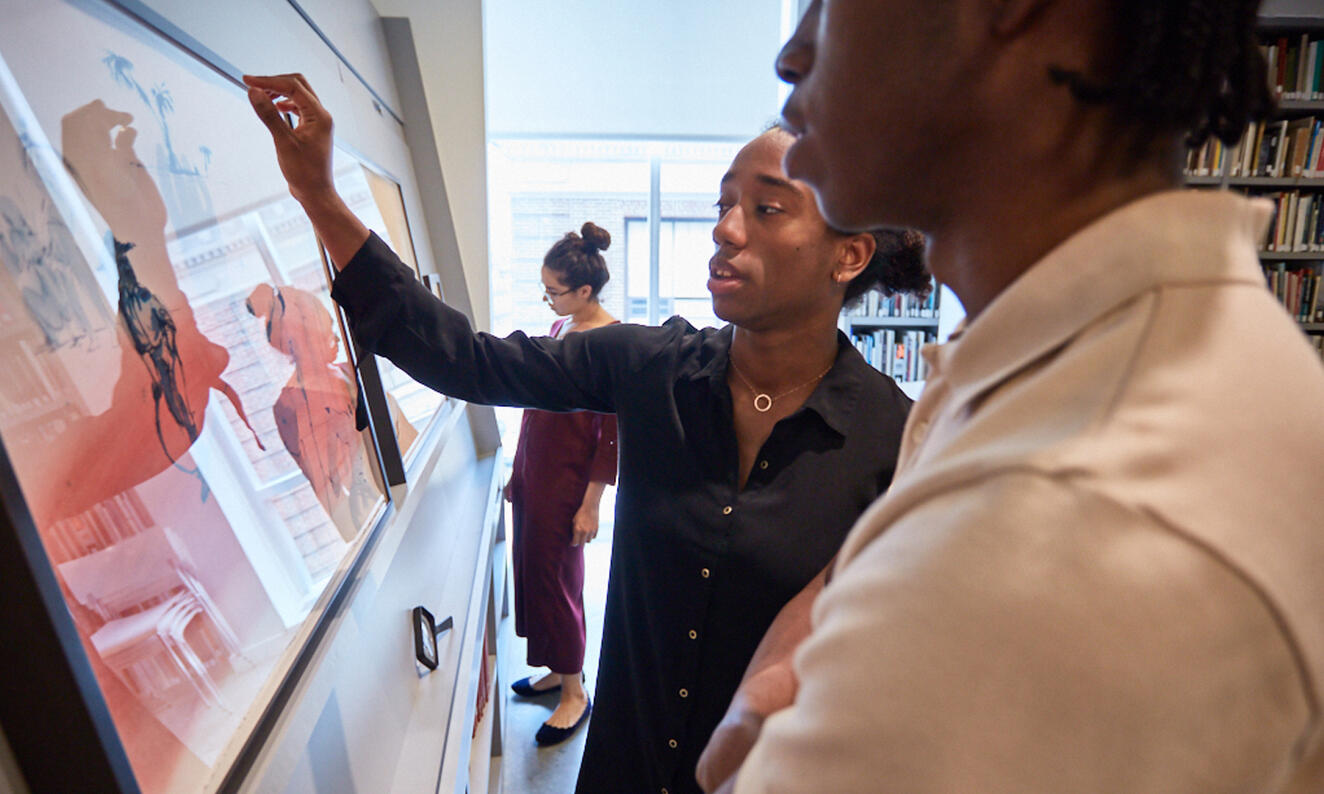The RISD Museum is a multifaceted resource for regional faculty across disciplines. We can support your learning goals with a collection of 100,000 works of art and design, space for students to interact with the public, and staff expertise in areas ranging from decoloniality to material properties to community engagement.
Whether you’re unsure how a museum could be relevant to your course, or you’re already a RISD Museum power user, this guide is for you. Where would you like to start?
- WHY work with a museum?
We believe that works of art and design can be a productive jumping-off point for building knowledge, practicing skills, and inspiring creative practice.
What kind of knowledge? Topics in courses ranging from chemistry to culinary arts to industrial design can draw connections to historical and cultural contexts, artists' ideas, and material origins. Students studying museums as institutions can learn from staff about colonial histories and potential futures.
What kind of skills? Conversations and assignments around works of art can be designed to teach writing, visual literacy, and critical thinking, or teach students about their own styles of thinking and communicating. Conversations in the "third space" of the museum can also strengthen critique skills.
What kind of creative practice? Students can create new work re-mixing and responding to historical precedents, or discover a diverse range of contemporary artists working with ideas, techniques, or materials that interest them.
Email the museum's academic programs staff at museum-academic@risd.edu to start a conversation about how your course could be served by a museum connection. Do you have a sense of what you want to explore, and need an understanding of possible formats for visits and assignments? Read on.
- WHAT can working with a museum look like?
Developing a museum-based assignment. Assign students to visit independently as a starting point for research or making. Students can use our guide to object-based research and office hours with museum staff to support their research process. Museum-based creative assignments have produced poetry, paintings, product designs, and playlists in response to the collection.
Visiting with your students. Lead a conversation around works of art in the galleries, assign students prompts for writing, sketching, or paired discussion, or discuss aspects of museum practice with staff. Visit self-guided or co-facilitate a visit with an educator or curator.
Using digital museum resources in the classroom. Through our online collection, you have access to tens of thousands of works of art and design, including exciting recent acquisitions. Search or browse to find and download images to use in your slides and learn about them through associated interpretive text and related publications. Assign videos, podcasts, or journal articles as homework to spark classroom conversation, or even develop an assignment using our open API.
Co-developing a whole course. In-depth partnerships can allow hands-on engagement with museum theory and practice.
Self-guided visit
A faculty member led her students in discussing examples of contemporary artists whose work engages with the climate crisis. To prepare to teach in the galleries for the first time, the faculty member met with a museum educator who helped select relevant objects and provided tips on object-based teaching. Image: John Willis, Indigenous Women Leading Frontline Action, 2016. Gift of Richard S. Press and Jeanne Press 2021.31.5Independent student visits
A professor in creative writing assigned her students to visit the museum independently and write alternative exhibition texts that reframe the themes of the exhibition.Co-developed studio assignment
Taking advantage of the expertise of the museum’s conservation staff, students researched the complex histories of color, considering the extraction, production, and consumption of specific pigments and locating works in the collection that incorporated them. Reflecting on their research, they created their own work responding to—and utilizing—the pigments in their current commercially-available forms.
Image: Egyptian, Paint Box, 1302–1070 BCE. Helen M. Danforth Acquisition Fund 1997.82Visit to see works not on view
Students in an FAV course looked closely and engaged in conversation around garments and landscapes in the collection to inform complex, original character designs that critically considered issues of appropriation and were personally and culturally resonant.
Image: Utagawa Kuniyoshi 歌川 国芳, Lifesized Dolls in the Inner Temple at Asakusa (浅草奥山 生人形 / Asakusa okuyama iki ningyō), 1853. Elizabeth T. and Dorothy N. Casey Fund 2005.80Semester-long partnership
Students researched and wrote on works in the collection that illuminated colonial histories—from decorative arts built on the triangle trade to 19th-century anti-immigration propaganda to repatriation debates and the work of 21st-century BIPOC artists—and met with museum staff to discuss museums’ histories and their work in present-day change.We can help. We urge you to start by considering your learning goals—what do you want students to take away from this experience?—then reach out to museum-academic@risd.edu to brainstorm a plan with the museum's academic programs staff. We offer professional development for faculty through workshops, two-year fellowships for RISD faculty, and documentation of teaching examples.
Ready to include the museum in your syllabus? Read on for logistical details.
- WHERE can I book and prepare for a visit that I’ve already planned?
First, check on hours and pricing here (visits for member institutions are always free!).
Self-guided visits
Lead a conversation with your students or assign them an in-gallery activity. Self-guided groups must be booked in advance to confirm gallery availability and to maintain accurate records.Visits to see works not on view and virtual visits
If works on view are not relevant to your needs, staff can support co-facilitated visits with works not on view in one of the Museum’s dedicated study centers or in a virtual format. Because capacity is limited, requests should be made no later than one month in advance and will be confirmed on a first-come, first-served basis.Request a visit to see works not on view or a virtual visit
Prepare for your visit by reviewing gallery guidelines here. Explore current and upcoming exhibition themes here. Browse this semester's gallery changes here.
Get the latest updates
RISD faculty automatically receive regular email updates from the museum; we encourage faculty at other institutions to sign up using this form. Emails are typically sent twice per semester and include upcoming professional development workshops and public programs, models of innovative teaching, resource kits around common themes, and more.
For your students
The museum also supports student learning through weekly office hours, co-curricular opportunities, and a range of pre-professional positions. Learn more here.
